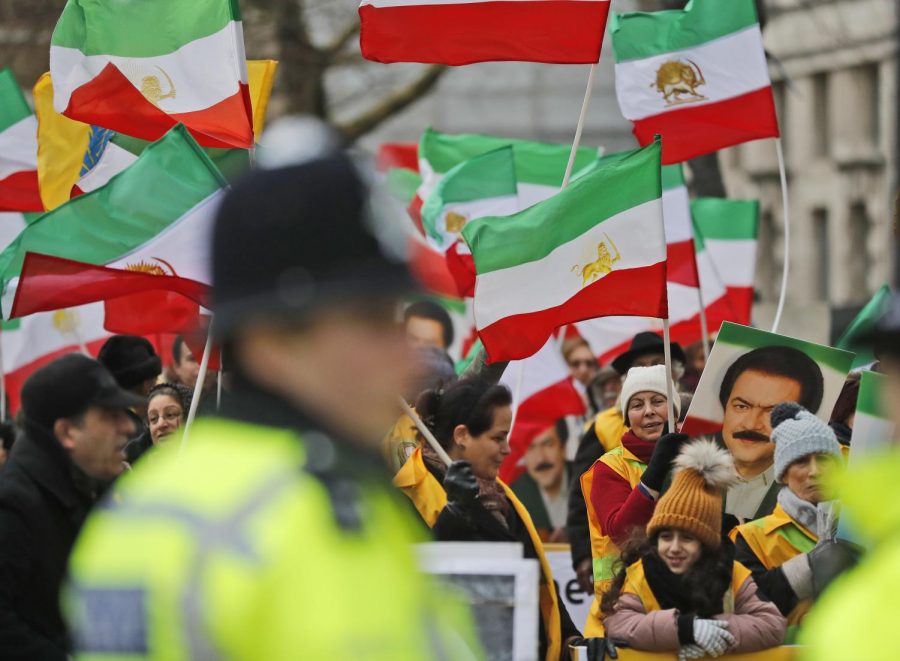Iran protests send shockwaves around the world
January 16, 2018
Tens of thousands of Iranians took to the streets in massive protests on Dec. 28 against the Iranian regime that lasted all the way into last week. U.S. Ambassador to the United Nations, Nikki Haley, called for two separate U.N. emergency sessions to discuss the situation.
The demonstrations occurred across Iran, and by Jan. 2 protests had been recorded in nearly every province in the country, according to the Associated Press. The protests seem to have begun as economic unrest against a sagging economy, high price of goods and corruption in the government after a leaked government budget showed vast sums of money siphoned to the clergy and the military, while cutting subsidies for the poor. This budget lead to widespread anger, first directed at President Hassan Rouhani, who was elected on promises of economic development and growth. However, the protests shifted to broader demonstrations criticizing the theocratic government of Iran and Iranian intervention in neighboring Middle Eastern countries.
The intentions of the protesters were varied, some chanting slogans like “leave Syria alone, think about us” in the city of Najafabad, others chanting “we don’t want an Islamic Republic” and “death to the dictator” in towns like Khoramabad.
In essence, the social and economic foundations of the protests have now connected with a deeper political dissatisfaction with a regime that has failed to improve the lives of everyday Iranians.

“The people there are frustrated by the inability of the government to create any meaningful change, politically and economically,” said senior Shourouk Abdalla, president of DePaul’s Middle Eastern Political Association (MEPA). “As we are soon approaching the seventh anniversary of the Egyptian Revolution (and Arab Spring overall) their outcries sound way too familiar.”
The last major protests in Iran were in 2009 after a disputed presidential election that saw mass demonstrations against the disputed election of hard-line conservative Mahmoud Ahmadinejad. Political unrest is not an uncommon issue in the region.
“The Iranian identity is unique to the Middle East, but they are just like every other middle eastern who are willing to die to see progression and change in their homeland,” Abdalla said. “As long as they keep fighting, ignoring conspiracies, breaking social taboos, demanding change and pushing forward, I am sure Iran’s future will become promising.”
Scott Hibbard, a professor at DePaul in the political science department, pointed out that these protests were “different from the 2009 uprising. The protesters in 2009 were mainly middle class and urban. The recent protests seem to have started in rural poor areas.”
Hibbard also pointed to reports that “some protests were spurred by conservative hard-liners.”
This theory does hold some water, as there are reports from Iran that former President Ahmadinejad has been arrested for inciting anti-government protests.
If true, this could point to the Rouhani faction in Iran using the protests to crack down on conservative opposition. While this crackdown will no doubt be brutal, it may lead to an increasing liberalisation of Iran, as Rouhani’s reformist policies are less obstructed by the orthodox old guard.
During the 2009 protests, there was a serious debate in Washington over whether the United States should align itself with the protesters. The Obama administration declined to do so, arguing that American support would make the protesters easier to paint as U.S. instruments.
In contrast, the Trump administration has offered much more direct support of the protesters, President Donald Trump tweeted several times about the protests, and Haley said at an emergency meeting of the UN Security Council that the Iranian regime is “now on notice” and offering full-throated support of the protesters and their right to protest and assembly.
There is some disagreement on how effective the support of the Trump administration will be in encouraging protests in Iran. One issue several experts have pointed to is that of the travel ban, which places tight controls on Iranian citizens entering the United States, reduces the credibility of U.S. support.
“It’s an affront to all Iranians,” Suzanne Maloney, a senior fellow in the Brookings Institution’s Center for Middle East Policy, said in an interview with Vox. “You can’t tell Iranians that you have their back when they confront the regime if you’re not willing to let them in your country, if you’re uncertain about going to the streets, knowing that you have somewhere to go is possibly a small encouragement. Many Iranians came here after 2009.”
Despite its vitriol and passion, the debate in the West on these issues is academic. At most, the U.S. can draw attention to the injustices the Iranian people face. Whatever small power the U.S. and other powers have in Iran, these protests stand for a larger conflict between the Iranian people and their government. The outcome will be decided in Iran itself.




